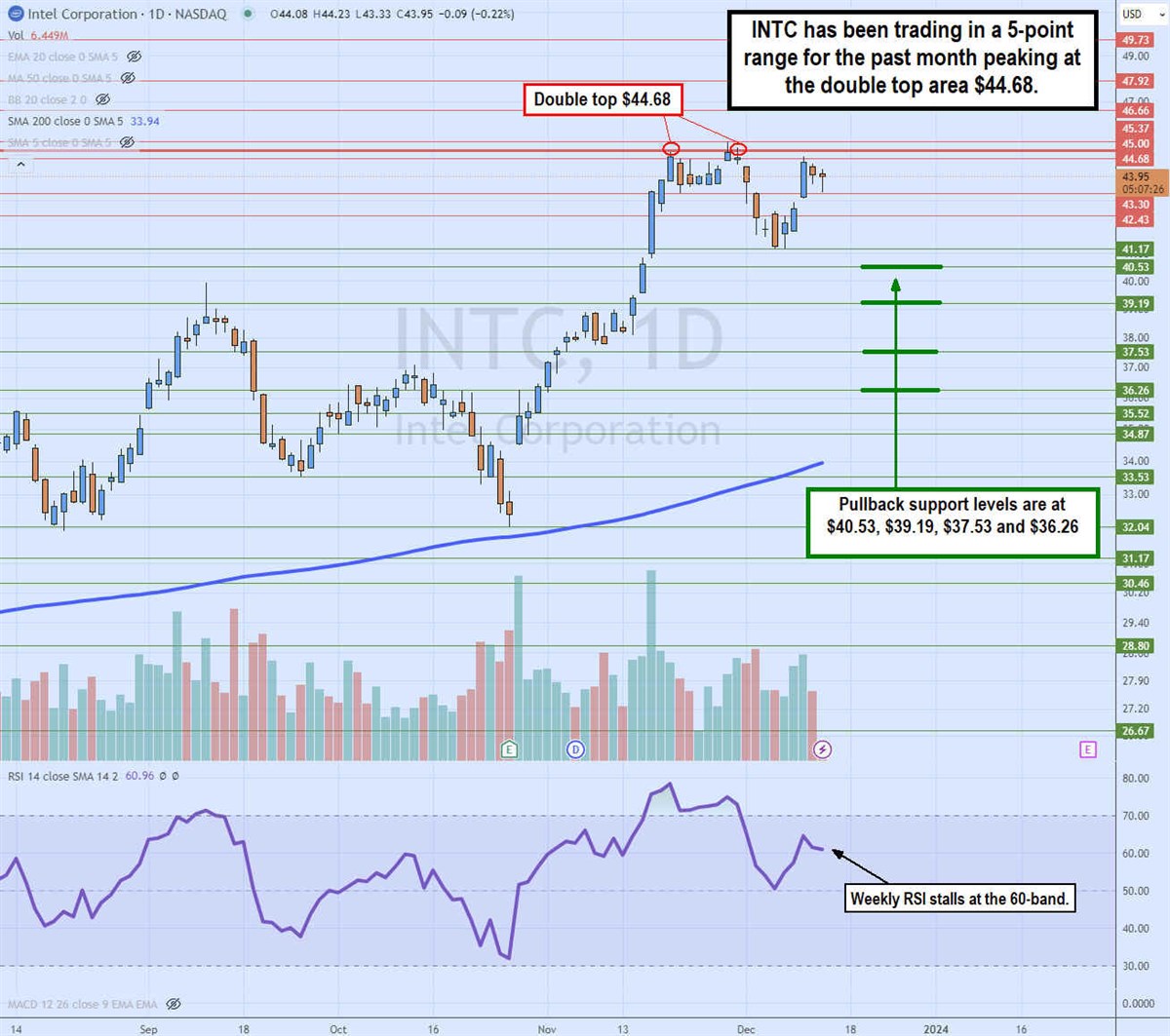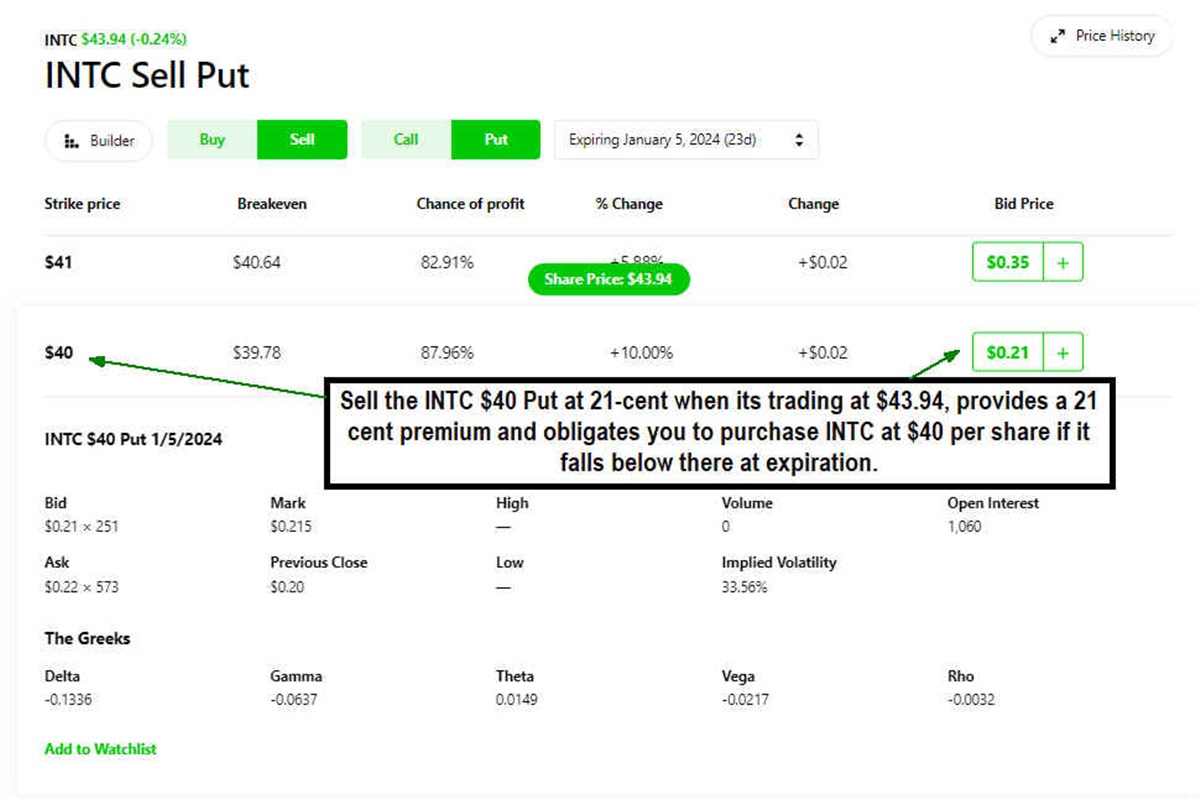
Have you ever wished you could buy a stock at a cheaper price? Who hasn't? If you have the patience and capital, then you can tactically buy the dips on a stock by implementing an options strategy of selling a put. This strategy can be used with any stock you don't mind holding with a medium to long-term mindset and has underlying equity options in any stock sector.
This is an entry strategy only. It's a way to get into a stock that you've researched and are confident in holding for weeks to quarters with confidence.
Can anyone trade naked puts?
While selling covered calls for income is a low-level strategy involving a lower options approval level, selling naked puts requires a higher options approval level. In either case, you will need to check with your brokerage for the specifics. It’s crucial to have an understanding of stock options contracts. To do naked options, you must have a higher option level approval, typically requiring a higher margin.
The mechanics of a sell-a-put strategy
When you decide to sell a put, you are stating that you will purchase XYZ at a specific price if the stock falls below that level on or before the expiration date. You are committed to and locked in on paying the strike price if the stock closes at or below the strike price on expiration.
The risk is that the stock collapses below the strike price too far, leaving you deep underwater by expiration. For example, if you sold a $25 strike put on XYZ and XYZ fell to $20, you would still be on the hook to pay $25 for the stock.
Seasoned traders that regularly trade naked puts usually try to trade a bottom in the stock price and hope the stock rises. As the stock price rises, the premium drops. Traders would sell the put closer to the strike price, hoping for the stock to bounce as they can buy back to put at a lower price and keep the difference in premium.
However, in your case, you are hoping for the stock to fall lower so that you can actually purchase the stock at the desired strike price.
Do fundamental analysis research to gain confidence in the stock
It's essential to prepare in the form of technical analysis and fundamental research. The fundamental research can be done first since you need to be confident in the stock position once you get filled to be able to hold as needed.
Find support and resistance levels
Pinpoint the price support levels and resistance levels on the stock. Support levels will be crucial in determining your strike price. The strike price will be the price you desire to pay for the stock. Be sure to identify any chart patterns that form in your analysis.
Select your put option contract by strike price and expiration
Once you've spotted the support levels, you can select the desired price at which you want to enter the position. This positive price should also be in proximity to support levels. The further out your expiration date is, the higher the premium you would collect for waiting to get filled.
For your expiration date, it's a good idea to pick a day without significant news preceding the expiration. For example, try to avoid an expiration date that is within a week after a quarterly earnings report. If the earnings report or guidance is weak, then the stock can gap down hard and trade at much lower levels than your strike price.
The good news is that you would be filled, but the bad news is that you would start the position with a big loss.
Do fundamental analysis
Let's try an example with semiconductor stock Intel Co. (NASDAQ: INTC). You've done your fundamental research and are convinced that INTC will be a good longer-term investment, at least for the next several quarters. You've also reviewed its last earnings report and are happy with the progress they've made.
INTC reported its Q3 2023 earnings report on October 26, 2023. The company beat EPS estimates by 19 cents, coming in at 41 cents versus 22 cents of consensus analyst estimates. Non-GAAP gross margins rose to 45.8% from 43% guidance. Revenues fell 7.2% but still bear analyst estimates at $14.2 billion versus $13.57 billion.
The company raised its Q4 2023 EPS guidance to 44 cents versus 33 cents analyst estimates. Revenue estimates were raised to $14.6 billion to $15.6 billion versus $14.36 billion analyst estimates. The company is improving and has raised guidance for the next quarter, which is to be released on January 25, 2024. You want to own this stock and are willing to hold confidently.

Do technical analysis
The daily candlestick chart on INTC illustrates a daily double-top resistance at the $44.68 level. The shares pulled back to $41.17 before bouncing again as the daily relative strength index (RSI) bounced off the 50-band. The pullback support levels start at $40.52, $39.19, $37.53 and $36.26. The daily 200-period moving average support is rising at $33.94.

Set up the trade
Let's assume today is Dec. 13, 2023, and INTC is trading at $43.94. You've decided to buy just under the 5-point one-month trading range at a $40 strike price. With the new year around the corner, you want to get a position established ahead of its earnings report, which is due out after the bell on Jan. 25, 2023.
The Jan. 5, 2024 expiration is 23 days away and also pays a 21-cent premium. After the $40 strike price, the next support level is at $39.19, which is 81 cents below the $40 strike price. The 21-cent premium subtracted from the 81 cents to the next support level leads to a risk of 60 cents.
If you sell the $40 INTC put expiring on Jan. 5, 2024, then you are hoping for an 8.9% pullback within 23 days to purchase INTC stock at $40. The initial risk is 60 cents or 1.5% after factoring in the premium to the next support level. Since you are planning on holding it longer term, you don't mind the pullbacks since you know the support levels.
What happens if INTC closes above $40 on January 5, 2024, expiration?
If INTC closes at $40.01 or higher on the expiration date of Jan. 5, 2024, then the contract expires worthless. You keep the 21-cent per share premium for the put, but you don’t get any shares of INTC. From here, you can opt to sell the put option again. Repeat the steps and consider a new expiration date and a strike price.
What happens after expiration if INTC closes below $40 on January 5, 2024, expiration?
If INTC closes at $40.00 or lower on the expiration date, then you will be assigned the stock at $40 per share. This means your broker will automatically purchase INTC at $40 per share into your account regardless of how much lower it closed at. Of course, you entered this trade accepting that you would be holding INTC and aren't worried about the near-term stock pullback.
However, if you are concerned that it may fall lower, you can always sell the stock, write a covered call or purchase a put contract as insurance against a larger sell-off.
Is it risky to sell naked options?
Yes. Naked options can be risky if you are unprepared and jump in unquestioningly. Part of the risk of naked options is the potential for unlimited losses. This applies mostly to selling naked calls because a stock can theoretically rise limitlessly. Meanwhile, the closest a stock can fall is to zero.
Therefore, selling naked puts has a limit to losses. However, if the stock falls well below the put price, then you are starting the position well into the red. It's important to place your strike price just above support levels and be sure the expiration date is not during the same week as an earnings release.
Also, if the position keeps you up at night, then don't hesitate to keep a stop loss. When in doubt, get out.